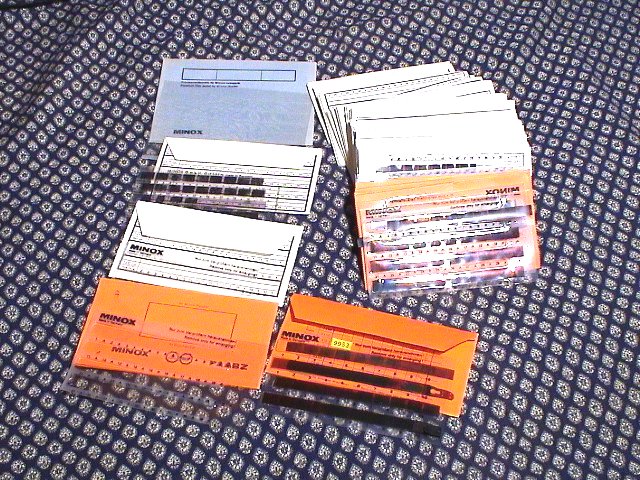
introduction | Riga | 50s | 60s | MPL | 70s | 80s | 90s | 2000
The original negative wallets held 5 rows of 10 negatives, made of celluloid and were first marketed with the Minox Riga in April 1938. The envelope is a open on three sides and a flap tucked in to secure.
The first post war negative wallets were made of plexiglass, but otherwise identical to the Riga version. From 1952 the sleeves were imprinted with "MINOX G.m.b.H. WETZLAR" and came in yellow cardboard covers.
In the 1960s the imprint was changed to "MINOX G.m.b.H., GIESSEN". These continued to be used during the early 1970s and where replaced by wallets with four rows of 10 negatives and the sleeves replaced by envelops, sealed on three sides. Film was returned with anything up to 12 negatives on a strip and it was not unusual for negatives and slides to be cut across, particularly those where the spaces between them are harder to determine.
The wallets where marked Wetzlar, then Giessen and the Minox eye logo was replaced by "MINOX".

Special versions of the wallets, being very flat and thin where sold for use with the microfiche readers.
Paarz returned the negatives in their own orange coloured envelopes and Lab811 use a crystal clear hard plastic case of a material for familiar with some CDs.
Negatives wallets used, sometimes complete with negatives are seen for sale. A candid history of a time past.
Last Updated on 21st October 2005